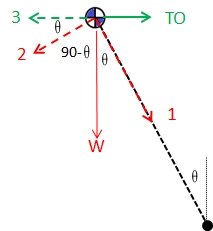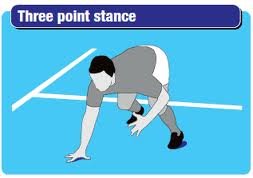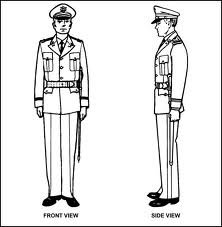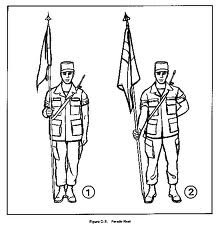With some regularity, often as a degradation of a sidestand/centerstand discussion, sides are drawn as to what is more stable...parking your bike on the sidestand or the centerstand. This is a somewhat polarizing subject and people tend to be in one camp or another...for one reason or another.
A recent discussion in Airheads (see "What are the chances") brought the subject up. The aspect of stability was mentioned and that looking at the contact points for the sidestand ("wide" triangle) and centerstand ("narrow" triangle) would clearly suggest that the sidestand is more stable. It's all about physics was the bottom line.
I contend it's not physics...that's a pretty broad term. Doesn't everything come back to physics?? I think it's more basic than that. It's Mechanics 101...it's free body diagrams...it's geometry.
I think it's more basic than that. It's Mechanics 101...it's free body diagrams...it's geometry.
What I'd like to do is offer a study in the forces involved and use that to put some numerical values to this to help illustrate what is more stable.
First, I'll define stability for this discussion, which I think is really at the heart of this discussion between the two stands. I'm not talking about a bike rolling forward when on either stand. Some Airhead models have the famous "feature" of a folding sidestand when load is removed...not talking about that stability. Yes, everyone is supposed to put the bike in first gear, supposed to park on solid ground, not mess up and park uphill/downhill/on a slant. Not talking about those situations.
Stability will be the force it takes to begin to move a bike from its parked position on either stand. This is the lateral force, that if big enough and sustained for long enough, will result in a tip over. So, what lateral (ie, horizontal to the ground) force does it take, to start this process. It would stand (no pun intended!) to reason that the higher this force, the more stable the position. The relative values of this force can be determined. That is the goal here.
A recent discussion in Airheads (see "What are the chances") brought the subject up. The aspect of stability was mentioned and that looking at the contact points for the sidestand ("wide" triangle) and centerstand ("narrow" triangle) would clearly suggest that the sidestand is more stable. It's all about physics was the bottom line.
I contend it's not physics...that's a pretty broad term. Doesn't everything come back to physics??
 I think it's more basic than that. It's Mechanics 101...it's free body diagrams...it's geometry.
I think it's more basic than that. It's Mechanics 101...it's free body diagrams...it's geometry.What I'd like to do is offer a study in the forces involved and use that to put some numerical values to this to help illustrate what is more stable.
First, I'll define stability for this discussion, which I think is really at the heart of this discussion between the two stands. I'm not talking about a bike rolling forward when on either stand. Some Airhead models have the famous "feature" of a folding sidestand when load is removed...not talking about that stability. Yes, everyone is supposed to put the bike in first gear, supposed to park on solid ground, not mess up and park uphill/downhill/on a slant. Not talking about those situations.
Stability will be the force it takes to begin to move a bike from its parked position on either stand. This is the lateral force, that if big enough and sustained for long enough, will result in a tip over. So, what lateral (ie, horizontal to the ground) force does it take, to start this process. It would stand (no pun intended!) to reason that the higher this force, the more stable the position. The relative values of this force can be determined. That is the goal here.



 ...
...  Luckily, twice I can recall, I was parked next to anything larger than me when I was in that situation...on the leeward side if I guessed right or close enough to the structure my bike disappeared in the wall/wind equation
Luckily, twice I can recall, I was parked next to anything larger than me when I was in that situation...on the leeward side if I guessed right or close enough to the structure my bike disappeared in the wall/wind equation The other guys didn't fare as well. My brothers Vision fared better than the KTM near it in MT one morning as we looked across the hotel lot from inside.
The other guys didn't fare as well. My brothers Vision fared better than the KTM near it in MT one morning as we looked across the hotel lot from inside. 


